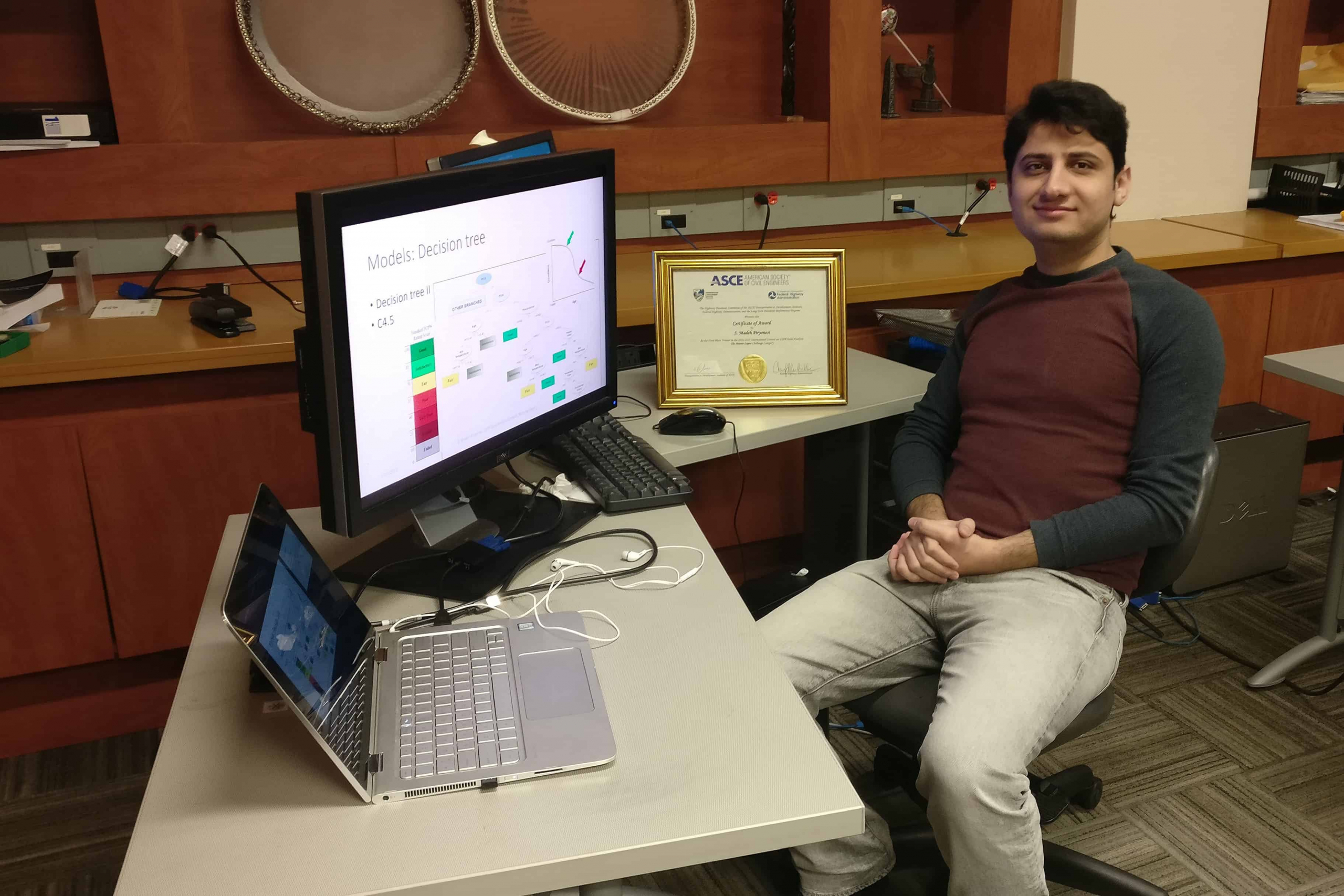Sayed Madeh Piryonesi, a PhD candidate in the Department of Civil Engineering at U of T, was recently announced as the winner of the 2016–2017 Aramis Lopez Challenge. The Transportation and Development Institute awarded Piryonesi, who wrote the paper under the supervision Professor Tamer El-Diraby, for their project titled “Using Data Analytics for Cost-Effective Prediction of Road Conditions”
The criterion for the challenge was to use the the Long-Term Pavement Performance (LTPP) program — a publicly available database containing comprehensive information on pavement performance in Canada and the US — to develop a better understanding of road performance measures over time.
“We look at this package [of available information] collectively, and we, as engineers, tell the policy makers and public when an asset should be maintained, how should it be maintained… [This] is called asset management,” said Piryonesi. “[The] study was in an area that is called deterioration modelling, because every asset is going to deteriorate.”
Deterioration modelling aims to help municipalities operate, maintain, rehabilitate, and expand infrastructure assets while delivering maximum service and managing risk and cost for taxpayers.
Piryonesi began to work on a predictive model to help evaluate the road quality in response to the Ontario government’s mandate that requires that municipalities have an asset management plan.
“We started to do data analysis on municipalities in Ontario, especially small ones,” explained Piryonesi, “but one problem was that their data was very different, very heterogeneous, sometimes missing.”
Piryonesi, with support from NSERC, Marmak Information Technologies, and the Ontario Good Roads Association, then decided to use the LTPP database to develop a predictive model to study pavement conditions. “The world is changing, data is everywhere, open data is everywhere, and we say that data is an asset.” This predictive model is a cheap method that can help predict deterioration and conditions of roadways.
Currently, most commonly used road maintenance plans are deterministic — they provide an estimate on the average lifetime of a stretch of road, without accounting for the conditions they are subjected to.
Piryonesi developed a machine learning model to help assess the quality of road pavement conditions and their deterioration over time. This model is known as the ‘decision tree’ for the hierarchical, tree-like branching pattern that is analogous to its methodology.
Because LTPP is a publicly available database, users can provide a range of factors that influence road conditions like the type and volume of traffic, pavement composition, and weather conditions. In return, the decision tree evaluates these variables, and then, by using the information from the LTPP database, determines the probable road conditions in the future.
Probabilistic models, like this decision tree, have the potential to provide a more relevant insight into the future condition of a road.
To show how his model is different from a deterministic model, Piryonesi used a meeting with a student as an example. “If I had a deterministic model, either she is gonna show up or she’s not, but a probabilistic model tells you, for example, [that] she is gonna show up with a probability of 60 per cent.”
In addition, the decision tree is easy to navigate and it allows individuals with limited data analysis knowledge to use it.
According to Piryonesi, the accuracy of the model is currently reported to be around 80 per cent in its assessment of road conditions. He hopes to improve the system’s accuracy and eventually commercialize the developed decision tree.
“We have a prototype,” said Piryonesi. “It’s working and I think it is just a matter of… how to patent it.”


